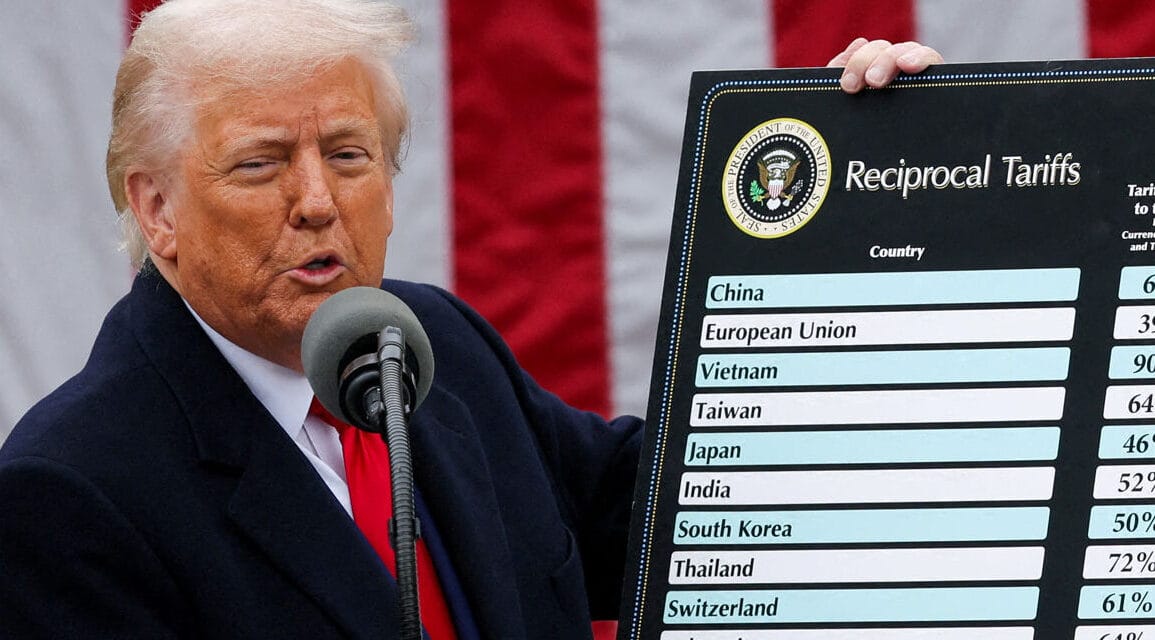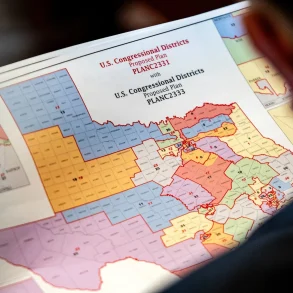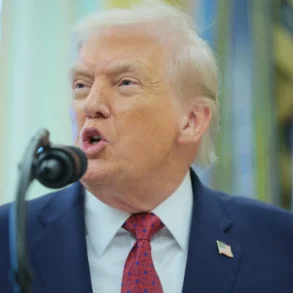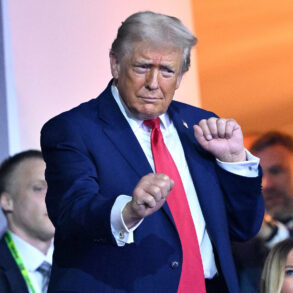President Donald Trump’s sweeping tariff plan, announced on April 2 and dubbed “Liberation Day,” is reshaping global trade relations in real time. Despite sharp criticism from economists, corporate leaders, and political rivals, the strategy appears to be achieving one of Trump’s key goals: forcing other countries to the negotiating table. As of this week, more than 70 nations have contacted the White House seeking trade talks, according to Treasury Secretary Scott Bessent.
While Trump’s new tariffs have sparked stock market turmoil and raised fears of a recession, the president is holding firm. He believes that tough negotiations are the only way to secure “fair deals” for the United States and reverse what he views as decades of trade abuse.
What Is Liberation Day?
“Liberation Day,” as Trump called it, was the launch of a major economic reset. Trump announced blanket tariffs on almost all imported goods, with rates starting at 10 percent and rising much higher for specific countries. The policy came with little warning and was implemented quickly, causing uncertainty in global markets. Trump defended the sudden move by saying, “The only chance our country will have to reset the table is right now. I don’t mind going through it, because I see a beautiful picture at the end.”
He added that past presidents were afraid to take bold action because of the potential consequences, but he was not. “Other presidents wouldn’t do this, because they’d be afraid to crash the markets. I’m not afraid. I’m doing what has to be done.”
The tariffs are scheduled to take full effect at 12:01 a.m. on Wednesday. There are no plans to delay or pause the rollout. “I’m not looking at that,” Trump told reporters Monday. “We’re going to get fair deals and good deals with other countries. If we don’t, we’ll have nothing to do with them.”
Countries Seeking Deals
In the days since the tariffs were announced, dozens of countries have reached out to begin negotiations. “Virtually every country wants to negotiate,” Trump said Monday. “They’re offering things to us that we wouldn’t have even thought of asking them for.”
Japan is expected to receive priority status. Prime Minister Shigeru Ishiba spoke with Trump directly and is sending a top team to Washington. Treasury Secretary Bessent confirmed that Japan moved quickly and “will get priority in negotiations.” Ishiba has pledged to bring a “negotiation package” that includes U.S. energy exports, automobile trade, agriculture, and national security cooperation.
South Korea is also progressing quickly. Trump posted on Truth Social that he had a “great call” with Acting President Han Duck-soo and said they are approaching “the confines and probability of a great DEAL for both countries.” South Korea is sending a delegation to Washington this week.
Israel’s Prime Minister Benjamin Netanyahu met with Trump at the White House on Monday. He pledged to eliminate the trade deficit with the U.S. and said Israel should be a “model” for how to negotiate. However, Trump has not yet rolled back the 17 percent tariff on Israeli imports.
Vietnam has taken significant steps to resolve tensions. Its leadership offered to remove all tariffs on American goods in hopes of reducing the 46 percent tariff Trump placed on Vietnamese exports. The country’s deputy prime minister arrived in Washington on Sunday with a delegation to begin talks.
India is seeking a diplomatic solution and has not announced any retaliatory measures. A government official told Bloomberg that India is “seeking dialogue and not confrontation.”
Other countries involved in negotiations include Bangladesh, Cambodia, Indonesia, Australia, Taiwan, Lesotho, and the United Kingdom. Cambodia offered to cut tariffs on U.S. imports from 35 percent to 5 percent if the U.S. begins talks. Lesotho, a small African country known for denim exports to Levi’s and other brands, has been hit with 50 percent tariffs but is also sending a delegation.
The European Union proposed a “zero-for-zero” agreement on industrial goods, meaning both sides would remove tariffs. European Commission President Ursula von der Leyen said the EU is “always ready for a good deal,” but Trump rejected the offer, saying, “No, it’s not. The EU has been very tough over the years.” The EU is now preparing to impose 25 percent retaliatory tariffs on U.S. products starting April 15.
China Refuses to Negotiate
China is one of the few countries that has not responded with talks. Instead, it has imposed retaliatory tariffs of 34 percent on American goods. In response, Trump threatened to raise tariffs on Chinese imports by another 50 percent unless Beijing removes its new taxes. In a message posted on Truth Social, Trump wrote that “all talks with China concerning their requested meetings with us will be terminated” unless they back down.
Treasury Secretary Bessent pointed out that China had “chosen to isolate itself by retaliating and doubling down on previous negative behavior.” Meanwhile, European leaders are urging China to seek a diplomatic solution. Ursula von der Leyen spoke to Chinese Premier Li Qiang and emphasized “the need to avoid further escalation.”
Trump’s Strategy: Leverage First, Deals Later
Trump has made it clear that the high tariff rates are a negotiating tool. “We are at a maximum tariff level,” Bessent explained. “It is my hope that through good negotiations, all we will do is see levels come down. But that’s going to depend on the other countries.” He also said, “President Trump is going to be personally involved in these negotiations.”
Trade adviser Peter Navarro echoed this strategy. “This is not a negotiation in the normal sense,” he said. “We are not just looking for tariff reductions. We are looking for an end to currency manipulation, subsidies, and all the other non-tariff cheating that goes on.”
Bessent added that the administration is using trade deficits to determine which countries face the highest tariffs, and noted that “academic studies have shown that it’s the non-tariff trade barriers that are the real problem.”
Critics Warn of Recession, Higher Prices
Many business leaders and economists have warned that Trump’s tariffs could backfire. JPMorgan Chase CEO Jamie Dimon said in his annual shareholder letter that the tariffs will raise prices on both foreign and domestic goods. “We are likely to see inflationary outcomes,” Dimon wrote. “Whether or not the menu of tariffs causes a recession remains in question, but it will slow down growth.”
Billionaire Ken Langone called the tariffs “bullshit” and said, “I don’t understand the goddamn formula.” Kimbal Musk, Elon Musk’s brother and a Tesla board member, warned that the tariffs are a “permanent tax on the American consumer.” He added, “We are simply not as good at making things,” and predicted that prices will remain high even if jobs come back.
Others voiced concern about the mixed signals from the administration. Economist Lawrence Summers said Trump’s strategy lacks clarity. “If other countries eliminate their tariffs, and the U.S. does too, it’s just making a deal. But if the goal is to raise revenue and move manufacturing back to the U.S., then we are going to have these tariffs permanently. The president can’t have it both ways.”
Even Elon Musk, one of Trump’s strongest supporters, posted a video of economist Milton Friedman arguing for free trade. Musk said he hoped the U.S. and Europe could move “to a zero-tariff situation, effectively creating a free-trade zone.”
A New Era in Global Trade
Despite market drops, rising consumer prices, and growing fears of a recession, the Trump administration believes the tariff strategy is working. Countries are not just reacting—they are actively seeking deals.
“It’s going to be a busy April, May, maybe into June,” Bessent said. He added that the administration would consider a pause only if countries show good faith. “We’ll listen to any offer that is serious,” Navarro said.
Whether this approach will bring real manufacturing jobs back to the U.S. remains to be seen. But one thing is clear: Trump has thrown out the old playbook. He has reshaped the global trade discussion, and for now, much of the world is coming to him.








